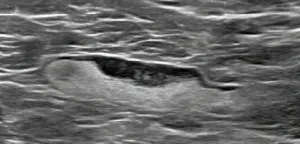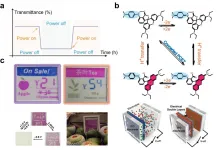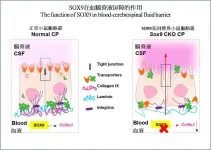(Press-News.org) Knowing the environmental and human-related variables that characterize the favorable areas for the incidence of the West Nile virus, a flavivirus that is transmitted from birds to humans by mosquitoes, is essential to identify those places in Europe at high risk of experiencing outbreaks, even before these are registered, thus enabling preventive measures to be taken.
Researchers of the Biogeography, Diversity and Conservation Group of the University of Malaga have developed risk models for West Nile Fever, the disease caused in humans by this virus, which, based on historical incidence data, may predict areas of future outbreaks a year in advance, as well as detect their intensity.
Artificial intelligence to develop risk models
Particularly, using modelling based on fuzzy logic and artificial intelligence, they have analyzed the incidence of the disease in Europe in 2017 to explain and restate the "abnormally high" data of 2018, the year with the highest number of cases registered so far, a total of 1605. The results have been recently published in the scientific journal PLoS Negl Trop Dis.
"Based on the analyzed data, we could successfully predict the places where the disease appeared, the intensity of outbreaks and the time they occurred", explains Raimundo Real, scientist of the Animal Biology Department of the UMA.
This expert asserts that anticipating the possible incidence of the disease may lead to taking preventive measures specifically in risk areas. These measures include early spraying, advising the population on measures to avoid bites or controlling the water points where mosquitoes breed. Likewise, healthcare centers could be warned about the possible disease incidence in the area, contributing to early diagnosis and improving prognosis.
Spatial and environmental variables
For the development of the risk maps, the researchers used a spatial model related to bird migration routes, which act as reservoir of the virus. On the other hand, they determined that the environmental risk factors are high temperatures, presence of river courses, low altitude areas, which usually have a warmer climate and conditions of higher humidity, and the presence of certain livestock facilities, such as stables and poultry farms, which, as they assure, are the most favorable factors for the spread of the virus.
"We have observed that high temperatures speed up the life cycles of mosquitoes, shortening their gonotrophic cycle -period between the time mosquitoes feed on blood and the time they feed again-, therefore, in warmer areas mosquito bite rate is also higher, facilitating the transmission of the virus", emphasizes the professor of the UMA.
Early warning: basin scale
Likewise, rivers are related to the presence and proliferation of mosquitoes, so rivers also contribute to a higher infection rate.
"In 2017, the outbreaks began in the lower areas of large river basins and spread to higher areas, which highlights the importance of river basins in the propagation of outbreaks", says Raimundo Real, who adds that, consequently, the early warning should be based on a basin scale.
This way, the Head of the Animal Biology Department of the UMA states that some Spanish provinces of western Andalusia, southern Extremadura and southwestern Castilla-La Mancha, especially the lowest areas of the Guadalquivir and Guadiana valleys, are European sites that are environmentally favorable for the transmission of the disease, which directly affects the human nervous system.
INFORMATION:
The study "Predicting the spatio-temporal spread of West Nile virus in Europe" is part of the National Plan project "Analysis of risks in Spain associated with the changing biogeographical basis of zoonotic diseases in humans", which is funded by the Spanish Ministry of Economy, Industry and Competitiveness and the ERDF. The study has been also conducted in collaboration with the International Vaccination Center of Malaga of the Spanish Ministry of Health, Consumer Affairs and Social Welfare.
Bibliography:
García-Carrasco, J. M., Muñoz, A. R., Olivero, J., Segura, M. y Real, R. (2021). Predicting the spatio-temporal spread of the West Nile virus in Europe. PLoS Neglected Tropical Diseases 15(1), e0009022. https://doi.org/10.1371/journal.pntd.0009022
Leesburg, VA, February 24, 2021--An open-access article in ARRS' American Journal of Roentgenology (AJR) describes the clinical and imaging features of axillary adenopathy detected during screening or diagnostic breast imaging after recent coronavirus disease (COVID-19) vaccination to inform the development of follow-up recommendations.
Shabnam Mortazavi of the University of California at Los Angeles reviewed electronic medical records to identify women with post-COVID-19 vaccination adenopathy found from December 2020 to February 2021. For mammography, Mortazavi considered a node abnormal when its size, shape, or density was deemed disproportionate to other axillary nodes (ipsilateral or contralateral). On ultrasound, she deemed ...
With the voice commands "Alexa Skills," users can load numerous extra functions onto their Amazon voice assistant. However, these Skills can often have security gaps and data protection problems, as a team of researchers from the Horst Görtz Institute for IT Security at Ruhr-Universität Bochum (RUB) and North Carolina State University discovered, together with a former PhD student who started to work for Google during the project. They will present their work at the "Network and Distributed System Security Symposium (NDSS)" conference on 24 February 2021.
More than 90,000 Skills analyzed
In their study, the researchers ...
Torino, February 24, 2021 - The eukaryotic cell is the basic unit of animals and plants. At the microscope, it looks highly structured and subdivided in many membrane-bound compartments. Each compartment has a specific function, and its membrane is populated by specific molecules. How does the cell preserve this amazing internal order, and (in the absence of pathologies) does not degrade into a shapeless bunch of molecules? Such degradation is countered by a continuous process of molecule sorting by which similar molecules are collected and dispatched to the "right" destinations, similarly to what happens when a house is kept clean and ...
COVID-19, the disease caused by the pandemic coronavirus SARS-CoV-2, is primarily regarded as a respiratory infection. Yet the virus has also become known for affecting other parts of the body in ways not as well understood, sometimes with longer-term consequences, such as heart arrhythmia, fatigue and "brain fog."
Researchers at University of California San Diego School of Medicine are using stem cell-derived organoids -- small balls of human cells that look and act like mini-organs in a laboratory dish -- to study how the virus interacts with various organ systems and to develop therapies to block infection.
"We're finding that SARS-CoV-2 doesn't infect the entire body in the same way," said Tariq Rana, PhD, professor ...
If Affordable Care Act protections for pre-existing condition coverage are no longer available, the coronavirus pandemic would leave many Americans - a disproportionate number of whom are people of color - without health insurance, a new Oregon Health & Science University study indicates.
Published in the Journal of the American Board of Family Medicine, the study's findings reveal a third of the more than 7,500 COVID-19 patients who received care at U.S. community health centers between March and October 2020 did not have a pre-existing condition prior to contracting the novel ...
UCLA RESEARCH BRIEF
Enrique Rivero
FINDINGS
Older people correctly ascertained basic information such as dosage and duration of use for more than 70% of the medications they were prescribed, regardless of whether their physician explained it during an office visit. But when physicians failed to verbally provide information about potential side effects, people incorrectly assumed that about 55% of their prescribed medications had none. Even when physicians did discuss possible side effects, their patients incorrectly assumed there were no side effects for 22% of the medications.
BACKGROUND
There is a shortage of data about how well people understand basic information about the medications they are prescribed. This information ...
The development of low-energy-consumption and user-friendly electronic displays has become a long-term goal for future global sustainable development. Bistable electronic display, which requires very little electric drive to turn pages without consuming additional power to continuously display information/images, is one of the very good potential alternatives. Reflective display technologies with partial/complete bistable characteristics include e-ink, cholesteric liquid crystal, and electrochromic technologies, etc. They display information in light reflection mode, which can still be read under high-brightness outdoor sunlight and relatively dark indoor environments. It is also very friendly to the ...
The yellow fever mosquito (Aedes aegypti) is a main vector of deadly diseases like dengue fever, chikungunya, and the Zika virus, which result in hundreds of thousands of deaths worldwide each year. Because Ae. aegypti prefers to bite humans and there are no vaccines for many of these diseases they carry, developing methods to control these insects is imperative in the fight to control illness.
In a study recently published in Proceedings of the National Academy of Sciences, a Yale-led research team developed a new method to track how Ae. aegypti move through the environment. ...
Live tracking and analyzing of the dynamics of chimeric antigen receptor (CAR) T-cells targeting cancer cells can open new avenues for the development of cancer immunotherapy. However, imaging via conventional microscopy approaches can result in cellular damage, and assessments of cell-to-cell interactions are extremely difficult and labor-intensive. When researchers applied deep learning and 3D holographic microscopy to the task, however, they not only avoided these difficultues but found that AI was better at it than humans were.
Artificial intelligence (AI) is helping researchers decipher images from a new holographic microscopy technique needed to investigate ...
The finding, recently published in the prestigious scientific journal Proceedings of the National Academy of Sciences of the United States of America (PNAS), has provided the scientific community a novel understanding to the molecular regulatory mechanisms behind the function of the blood-CSF barrier and lays the groundwork for developing novel therapeutic strategies for preventing and treating neurodevelopmental disorders.
Dysfunction of blood-cerebrospinal fluid barrier is common in various neurological diseases
CSF is a clear, colourless body fluid that surrounds the brain and spinal cord, providing them a cushion against injuries. It also ...




